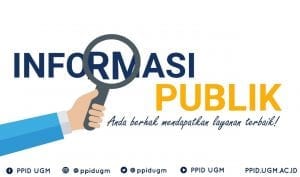Yogyakarta – The Javanese Literature Study Program at Universitas Gadjah Mada has conducted public lectures with Drs. Akhmad Nugroho, S.U., a retired lecturer at the UGM Javanese Literature Study Program an expert speaker, this lecture discusses more deeply Modern Javanese Literature: From Padmasusastra to Suparto Brata. This activity is open to all UGM academicians and will be held on Tuesday (9/11) through Zoom Meeting.
In this public lecture, one of the Javanese Literature Study Program lecturers, Rudy Wiratama, S.IP., M.A. as the moderator and one of the 2019 Javanese Literature students, namely Eka Pradipta Kalingga Murda as Master of Ceremony (MC).
Drs. Akhmad Nugroho, S.U. explains that choosing a focus requires effort and passion. In his thesis, he chose to research modern Javanese literature for these reasons. This is despite a large number of Javanese literary works, ranging from Old Javanese literary works, medieval Javanese literary works, and finally modern Javanese literary works.
“Before moving on to modern Javanese literature, previously there were works of old or ancient Javanese literature, which were precisely the works of poets,” said Drs. Akhmad Nugroho, S.U.
The explanation begins with the grouping of Javanese literary works based on the time they appeared, namely there are ancient Javanese literary works of poetry or what are known as kakawin, for example, kakawin Ramayana, Bharatayudha, Negarakertagama, and others. This is followed by mid-poetry Javanese literary works which are carols, for example, the Kidung Ranggalawe. And the last one is works of modern Javanese literature in the form of novels and short stories which are still easily found in society today.
Moving on to modern Javanese literature, the initial milestone for the establishment of contemporary Javanese literature was the birth of the novel Serat Riyanto by R. M. Sulardi, and other novels by Margana Djajaatmadja, for example, one novel entitled Ngulandara.
Over time, other novelists emerged, for example, Suparto Brata, who boldly wrote Javanese short stories in the Surabaya dialect. Before there was Suparto Brata, Ki Padmasusastra appeared with a semi-philosophical novel, namely the novel Serat Rangsang Tuban. Ki Padmasusastra was considered an intermediary before the heyday of Suparto Brata. The novel Rangsang Tuban is still traditional and palace centric, but it is included in modern Javanese literature because its content discusses the rejection of forced marriages.
After Ki Padmasusastra, Suparto Brata is the next famous Javanese literary figure or author. East Java is very advanced in terms of Javanese literary works, that’s why Suparto Brata exists very much in East Java.
After Mr. Drs. Akhmad Nugroho, S.U., finished explaining everything, the session was opened by the moderator. The question and answer session lasted interactively until the end of the event. In closing, Drs. Akhmad Nugroho, S.U., advised on reading Ngulandara’s novel as a door if you want to explore modern Javanese literary works.
“The pioneer figures of modern Javanese literature all characterize things even though with their respective ways of expression, relatively the same, namely attention to social problems,” said Rudy Wiratama, S.I.P., M.A. as the webinar moderator. What makes it even more different is that modern Javanese literary works have styles of speech that are more revolutionary when compared to ancient Javanese literary works, and there is a breadth of themes that discuss actual things that are happening in society which are the strength of Javanese literary works to continue to live from time to time.
Finally, Rudy Wiratama, S.I.P., M.A. express his gratitude to Drs. Akhmad Nugroho, S.U. for providing material in the webinar as well as good wishes to the presenters and students participating in the webinar.


